I had a thing going for the Konica C35 series cameras and was very happy with the C35 Automatic, which I have used on a couple of occasions previously. The camera has an excellent reputation for its compact design, light body weight, ease of use, and tack-sharp images.
The same can also be said of the original Konica C35 series cameras, which include the C35, C35 V, C35 Automatic (C35 Flashmatic in Japan), and highly sought-after Auto S3 (C35FD), which came with a fast 38mm F1.8 lens. Each of the other iterations carries the same tack-sharp Hexanon 38mm F2.8 lens.
The all-plastic-bodied Konica C35 EF is the first follow-up to the series. Launched in 1975, the C35 EF was the first 35mm compact camera with a built-in flash and was nicknamed 'Pikkari' in Japan. The camera has a similarly configured 4-element Hexanon 38mm F2.8 lens as seen on previous C35 models. This model was later superseded by the fixed-focus C35 EFP and autofocus C35 AF.
Konica C35 EF Film Camera Review with photos
Review of a camera that I used for a while. It takes 2 AA batteries and one PX675. The AA batteries are for the flash and PX675 is for the meter in the back. The battery input for the meter is close to the viewfinder. Open both battery compartments to check for corrosion.
Operationally, the C35 EF works with an exposure range from F2.8 at 1/60 second to F16 at 1/125 second. The film ISO speed rating for both cameras remains the same, from 25-400, and its selection mode is similar, by a ribbed dial located on the periphery of the lens element. Flash is a snap-up type, activated by a slide switch on the lower part of the right front panel.
Model Variation
The Konica C35 EF came in two iterations, the first from its release date in 1975 and a second from 1977 onwards. Enhancement to the camera includes the incorporation of a self-timer and a higher top shutter speed of 1/250 second, up from the 1/60 and 1/125 of the older model.
The self-timer version of the C35 EF comes with the clockwork self-timer dial on the left side of the lens. Additionally, the slide switch for the flash comes with an orange plastic top, and the focusing symbols on the lens focusing barrel are framed. Focusing is achieved by selecting preset distances on the rotating lens barrel, using the zone focus method.
Basic Camera Features
The overall shape of the camera is almost a simple brickbat with filleted corners and rounded edges. The Konica C35 EF is available only in black.
The front of the camera is where all the happenings are - the lens and lens mount housing with the lens surrounded by the film ISO dial selector, film ISO display window, CDS meter bulb, and distance scale setting on the barrel of the housing mount itself. On the right of the front plane is the pop-up flash unit, which occupies about a third of the front width of the camera.
Set the flash unit to ON by pushing the flash release button inward, and this will pop the flash unit up.
The top plate of the C35 EF is a flat plane with only the shutter release button, the film forward cranks, and a film counter window in a cluster on the right. The film rewind crank and the upper-deck pilot lamp for the flash unit are to the left of the top, located just aft of the snap-up flash unit.
Almost the whole of the camera back, below the back of the top plane, is occupied by the film back, locked by a small slide latch. The top portion of the film back is occupied by the viewfinder eyepiece, with an eye-level pilot lamp next to it, and in a somewhat different configuration from other cameras, the battery chamber for the electronics of the camera.
The bottom plate is another plain affair with only the tripod socket, film rewind button, and flash battery chamber cover on the right.
The film box is simple and spartan with all the required mechanicals for proper film loading and winding using the Konica IGL (Insta-Grip Load) system.
Viewfinder Readout
The viewfinder of the C35 EF is a bright-frame unit, with parallax marks for close-distance image framing. On the right vertical of the display is the aperture scale with under- and overexposure warning zones (in Red), and on the left, the focusing zone scale.
The aperture scale will display a pointer needle which will show the aperture setting the image will be shot in, while the focusing zone scale will display another pointer needle showing the distance zone setting set on the lens barrel.
Battery
The Konica C35 EF is designed to be used with a 1.35-volt PX-675 mercury button cell. Since the battery is no longer in production, replacements in the form of the 1.35 zinc-air hearing aid battery, or a higher voltage SR or LR 44 (1.5 volts) are often used.
The battery for the flash unit is 2 units of standard AA batteries. Battery usage and replacement needs for the camera's electronics and flash unit are independent of each other.
Using The Camera
Using the camera is straightforward. It is almost a film point-and-shoot, except for the fairly wide F2.8 lens, which does require a bit more finesse in focusing or distance zone setting. With a body weight of only 340 grams and without a battery, the Konica C35 is light, compact, and handy enough to go wherever you go.
Once you get the hang of winding the film forward after every shot, framing the image horizontally or vertically, setting the focus zone correctly, and holding the camera steady while you press the shutter release, the fun and enjoyment of doing film photography should be natural.
Done on a short day trip, these early images were shot on a roll of nearly expired Kodak ColorPlus 200, lab-processed, scanned with the CanoScan 9000F Mark II, and post-processed on Olympus Viewer 3 (OV3). Print finishing was done on Google NIK Sharper Pro 3.
As I mentioned earlier, the manual focus Konica C35 EF is not very forgiving when given the incorrect zone focus distance setting. When grabbing shots on the fly and not giving yourself enough time to frame and focus, you may very well end up with the following images.
They (these images) are still worth the color and composition, though.



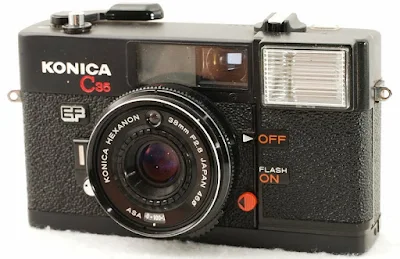
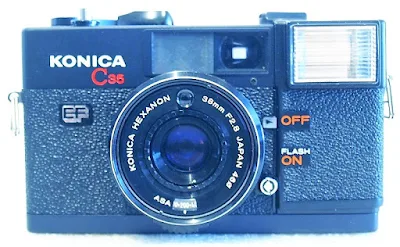



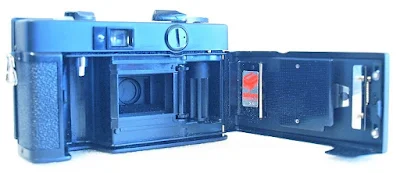


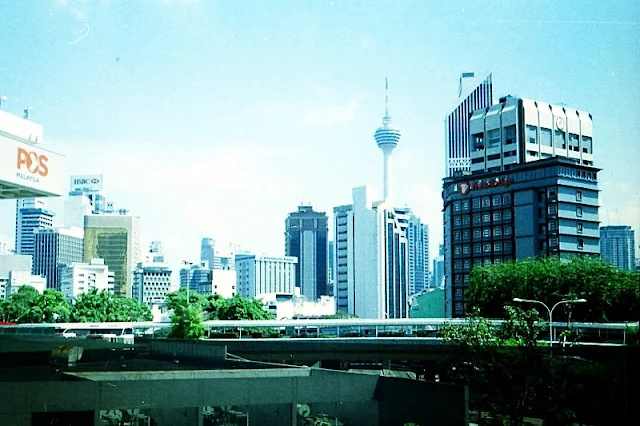
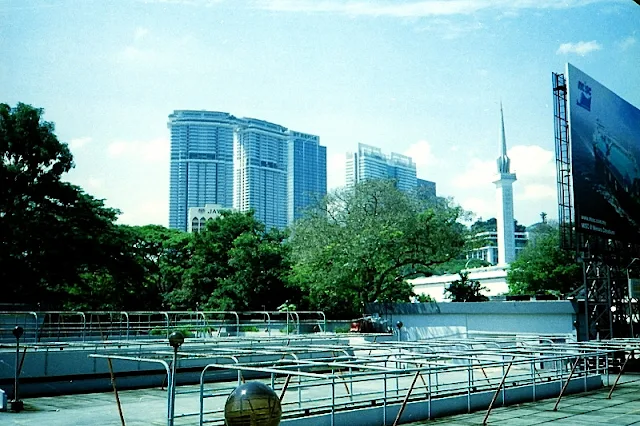


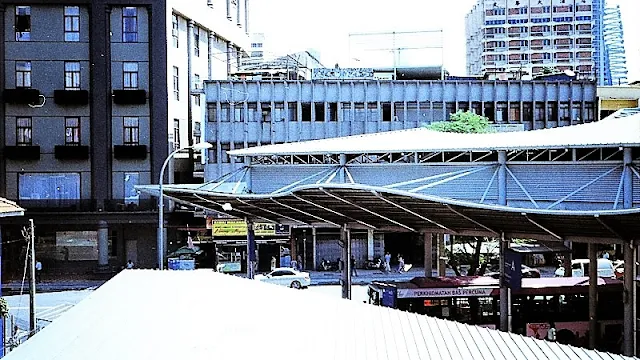

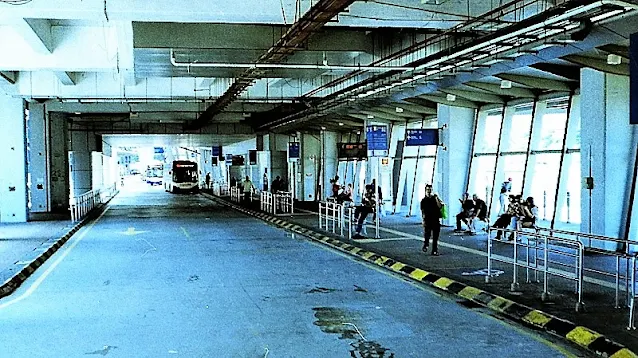














How do you change the aperture scale? And what color film should i use?
ReplyDeleteThe C35 EF is automatic AE exposure camera where the aperture opening is matched to the shutter speed setting. The aperture setting, therefore, cannot be set manually. You can see, however, the aperture value as it is displayed in the viewfinder.
DeleteThe film ASA speed range for the camera is from 25 to 400. You can use any color film whose ASA speed falls within this range. The ASA speed setting has to set manually as well, do this soon as you load the film (before you start shooting).
Hi!! what happens if you don't put a battery for the light meter? how will it affect your shots?
ReplyDeleteYou will have no control over the AE setting for the shot you are taking, thanks.
Delete